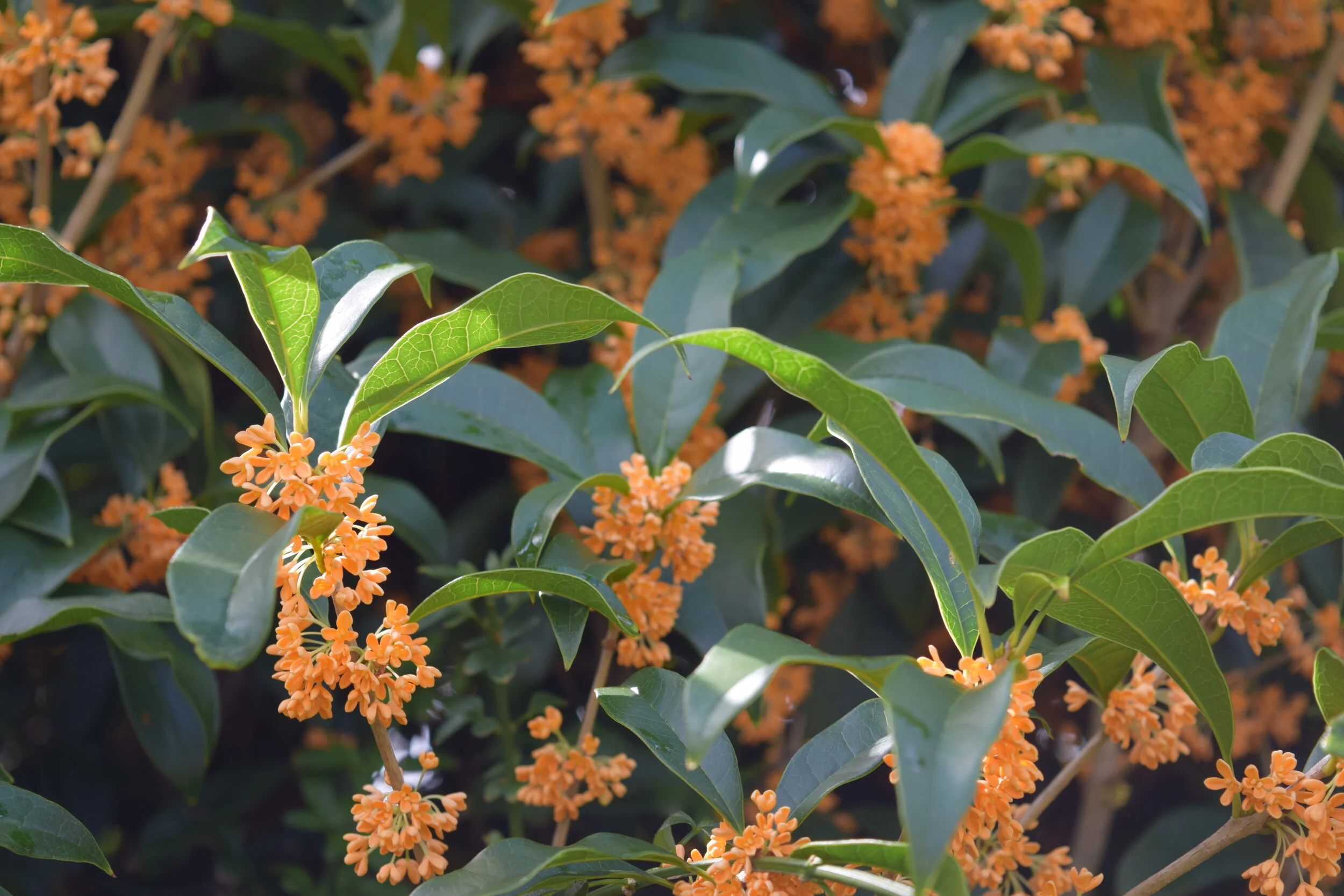The unofficial change of seasons is upon us: the Osmanthus fragrans have begun to bloom!
Often called “Sweet Olive” or “Fragrant Tea Olive”, Osmanthus fragrans are large growing, broad leaf evergreens in the Oleaceae family. You guessed, that is the Olive Family!
The blooms of O. fragrans can be used for various culinary purposes. Osmanthus tea is made from combining these sweetly scented flowers with black or green tea leaves, harvested from Camelia sinensis. Traditional Chinese medicine claims that osmanthus tea improves complexion and helps rid the body of excess nitric oxide, a compound linked to the formation of cancer, diabetes, and renal disease.
There are “about” 30 different species of Osmanthus, mostly native to Asia. They range in size, habit, flower, and fragrance. I am charmed by all aspects of this genus.
Ten years ago, while working as a propagator specializing in Asian native broadleaf evergreens, I became obsessed with collecting and producing EVERY Osmanthus species and variety that I could find. They root easily from cuttings and are well suited for landscapes in zones 7-9. At one point I had 20+ selections in my home garden! Though a few have died during extreme cold spells, most are thriving... and starting to remind me of the benefits of short days!
One of my all-time favorite plants is Osmanthus fragrans var. aurantiacus which I have planted in a south facing, full sun property border. This has been in the ground since 2011, and was installed as a very small 1 gallon, 2 year old rooted cutting. Nine years later it is about 15’ tall, dense, and pyramidal in shape with NO PRUNING EVER (sans a few branches to bring in to enjoy the scent)
My friend Mark Weathington, director of the JCRA has famously said he would not want to live in a region where Osmanthus is not hardy, and I fully agree! Breathing in this intoxicating scent truly is one of life’s greatest pleasures.
You can learn more about tea olives and their hardiness zones here.









